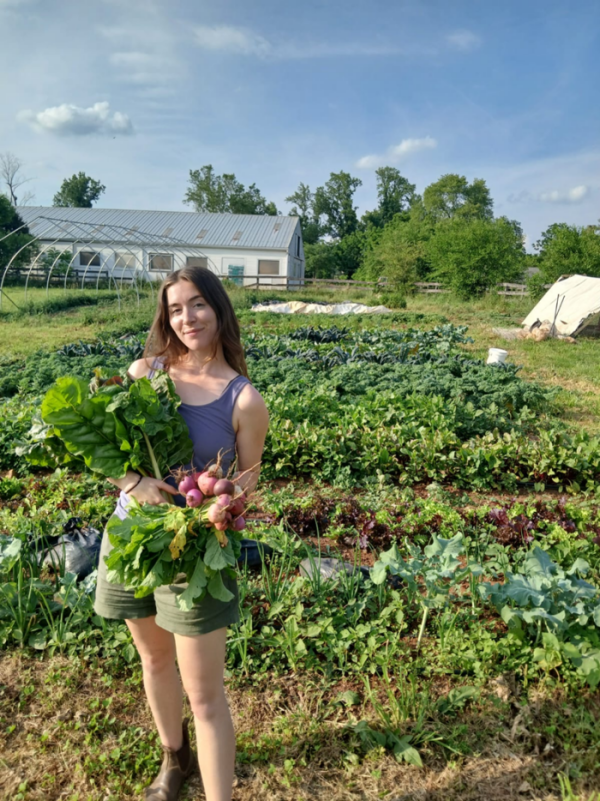Meet the Team: Melanie
posted on
February 21, 2025

Melanie has been working with Whiffletree since she was a teenager. She started out on our processing crew, and now she works as our bookkeeper. It is such a blessing to have her at the farm. She has so much passion and enthusiasm and love for life that is contagious for everyone around her. The most exciting development recently is that she and her husband just welcomed their first baby girl into their family!
Where did you grow up?
I grew up here, in Fauquier County! I have 11 siblings, of which I am the third eldest.
What did you do before you came to farming/Whiffletree?
After going to college and trying to determine just what I would do next, I ultimately found myself in nursing school. While the information was fascinating and experiences were valuable, I ultimately discerned out of that and found myself back at Whiffletree.
What inspired you to become a farmer?
As long as I can remember, I’ve been interested in farming. As a young child, books like Little House on the Prairie and similar stories gave me insight to a way of life that once was more common. A life full of hard work, being in tune with and working with nature, self-sustainability, and ultimately just being intentional with my decisions. I would check out books from the library on raising animals and gardening. I quickly made farming a part of my personality and identity.
What are some things you didn’t expect to learn that farming has taught you?
To be mentally tough. Like a lot. Sometimes you really do just have to do something even if you don’t want to. For example, I’ve had early mornings hand shoveling a walkway in feet of snow to check and tend to lambs. Also, in the middle of the night in windy March to check on trays of little plants just to make sure they weren’t frozen. Then quickly having to come up with a plan to save them! The list goes on. But I have learned that the weather and time of day does not discriminate against having to work.
How has farming benefited you?
Farming has benefited me in many ways. It’s built resiliency, analytical thinking, and acceptance, just to name a few things. Working with your hands and mind to produce fruit (literally and figuratively) is quite rewarding.
What do you hope to accomplish through farming?
I hope to continue to build a life where each day is rewarding. It’s important to remember that raising a small garden to feed your family can be just as fulfilling as raising thousands of chickens to sell to hundreds of people.
How has your role at Whiffletree evolved in your time here?
In high school I started out working on the poultry processing crew. Since then I have: worked general farm chores, farm store, inventory management, bookkeeping, poultry processing crew management, and various other tasks.
Most memorable Whiffletree experience?
13 hour turkey processing day. In November. Brrrrr!
What’s your favorite animal on the farm? And why?
My favorite animal is hands down the cattle. They mosey through the pasture intentionally grazing their days away. They aren’t concerned with what has been or what will be. When I sit and watch them, I often feel silly, wondering just why do we rush through our days like aimless busy bees, when the cattle are just as or even more content taking each day as it comes? I 100% recommend visiting the cattle when you visit the farm store. Bring your lunch, just sit and watch silently.
Favorite hobby? Or favorite things you like to do when not working?
I love to garden, hike, learn anything, and bake.
Favorite food?
Meat. Probably beef.
Favorite dish you like to make with a Whiffletree item?
I love to make one pan pasta dish in a cast iron. I cook mild Italian sausage and vegetables in the pan , then add uncooked pasta, broth, heavy cream, pasta sauce and cheese. Let it all cook together. Yummy and easy!




